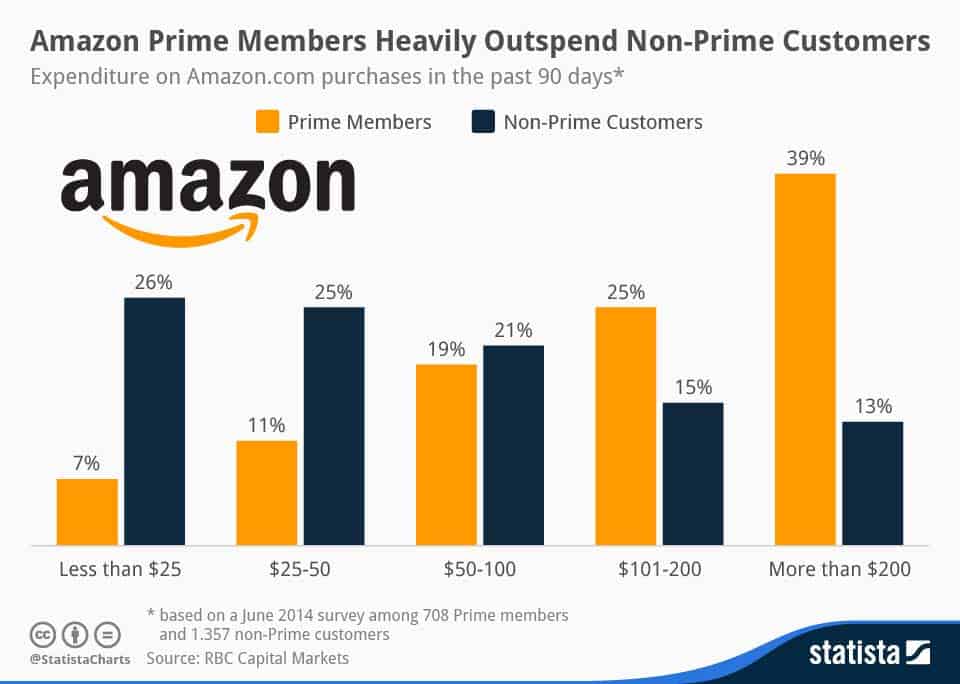There are lots of questions, expert advice, and tips about Digital marketing strategies and eCommerce sales conversion optimization techniques. However, most of the tips from the writer are assumptions and ideas, not from their own experience. As a practical Digital marketing consultant, I hear the same questions from my clients and friends. Therefore, I’m going to write a few simple, easy-to-implement tips about eCommerce SEO and how to implement this to your website.
In today’s day and age, we have become dependent on modern communication gadgets & online activities. Consequently, the number of purchases from online stores is rising with each year. According to the Office of National Statistics (ONS), in 2013, 72% of adults bought goods or services online in 2013
Unlike business websites, eCommerce websites have their own set of distinctive challenges and opportunities. Companies need to take advantage of every opportunity to effectively meet these challenges. This assures a positive impact on your traffic and revenue rate. To have a gorgeous well designed and attractive website could be one part of productive sales; but are you certain that having one will increase output? If you wish to get recognized by top search engines like Google, Bing, or Yahoo to attract shoppers to your site, SEO is the answer. In order to improve search engine rankings, you need to ensure the website is search engine friendly.
Maximize your eCommerce Sales Conversion
SEO is an acronym for “Search Engine Optimization”. It is someone who understands how search engines work and optimizes web pages to rank highly within the search results. SEO directly plays a significant role in defining how much traffic an eCommerce store makes. Most of the online shopping sites struggle with implementing the correct SEO strategies and action plans to boost their sales conversion, and many eCommerce portals use the automated product and inventory systems that have the advantage of handling instant product page creation and sales automation through third-party applications.
However, unlike the conventional techniques that marketers use to handle web promotions (blogs, forums, etc.), for websites, optimizing online web stores is quite different. The significance of eCommerce SEO under a business plan is obvious, but on the other hand, formulating the perfect digital marketing strategies for an eCommerce website is a challenging task for business owners. Here I’m going to share the best eCommerce sales conversion optimization tips that will help you to fully optimize your online site.
#1. Turn on Search Engine friendly URL’s
The core of every positive and effectively augmented eCommerce website is a well-versed and planned architecture. Organizing the site to make it user-friendly is truly significant. Search engines give better results when they search your website. If you have a site with many categories of products, they need to be indexed properly. Users will have an improved experience and can find what they are looking for. In search results, this helps boost a site’s visibility.
URLs make a lot of sense when they are easy to understand by humans “human-readable” and are easily understood by search engines “search engine friendly (SEF)” or pretty URL’s. Likewise, they are just as important as the description for search engine ranking and optimization and page title. URLs have a direct impact on how you rank for keywords. One of these SEO techniques is to make sure the specific keyword of interest appears in your URL. However, experts believe that having keywords in the URL is a vital share of the equation.
Best URL Rewriting Practice:
- Consider using the product name, a category in your product page URLs
- Avoid using too many stop words and unnecessary special characters in your product title
- Avoid using many .htaccess or page redirection conflict
- Implement 301 Domain Redirection and Page, IP Canonicalization for avoiding duplicate content issues
- If you use Tracking parameters or session IDs, simply tell search engines to ignore this via the Google webmaster tool
#2. Ultimate Keyword Research Tips
Keywords are the search words and phrases that people use in their online searches. Finding the right keyword,s or you can call it the “Money Keywords”, can trigger sales. Keyword research is one of the most valuable, important, and high return activities in the eCommerce search engine optimization strategies. Using wrong or ineffective keywords can lower your site’s effectiveness drastically. For accurate research, keywords and information, you need to put in your time, using a series of relevant keywords related to the services and products is of vivacious importance. In case the keywords chosen are too common, the search results will simply not show up. And this is one of the reasons for hitting back and lower buying attributes. If your product list is the same as available on your competitor’s sites then you need to come up with quality keywords. Long-tail keyword phrases consist of three to five words that users use for explicit searches. This attracts more quality traffic, leading to more conversions.
Best keyword research & implementation strategies for eCommerce websites :
- Identify your target market and segmented audience interest via Google keyword planner or Google Trend
- Enable keyword suggestion, Ad group and traffic estimation fields to identify users monthly search volume
- Categorize high, low and average competitive keywords based on your business and product niche
- Create a list of long tail keywords, commercial keywords , generic keywords that related to your brand keywords
- Integrate keywords within your meta tags, web contents, images, and Hyperlinks, and balance your minimum keyword density
- Avoid an over-optimization issue by using a series of main commercial keywords in multiple outbound link profiles
- Generate multiple “relevant” keywords from Google related search for your off-page link acquisition purpose
- Use long-tail keywords for image name, Alt tags, and Hyperlink title to maintain better keyword proximity
#3. Craft Perfect Title for your Page
The most important SEO component on paper is the “Page Title” Tag. In order to grab online visitors’ attention and better search engine visibility, use well-planned intriguing, search engine-friendly page titles. Carefully crafted page titles always improve search engine visibility and user interaction. However, there is a standard for writing, high converting search engine friendly title tags are essential for specific product pages and static web pages.
Perfect Title tag :
- Replicating same page titles on your website is not a good idea, you need to write a unique title for each product page manually
- Keep the length no longer than 55 – 69 characters and also avoid stop words, as well as unnecessary special characters
- Brand keyword and commercial keywords must be perfectly blended within the title tag to generate SEF title and vanity URL
- For separators, avoid underscores and instead use spaces, dashes, commas, or pipe for better search engine benefit
- Always start with brand name, product name + product title to maintain recommended Semantic pagination structure
#4. Use actual Product Descriptions
Online stores are often crowded with inventory and low on product descriptions. Writing quality and actual descriptions encourage more site traffic and provide better chances of selling. For e-commerce sites, each and every product is an opportunity to add useful content. Competitive advantages, consumer reviews, and feedback are the fruits obtained from accurately describing products, but it is essential to avoid keyword stuffing. Users’ preference and trust in your site against competitors is of vital importance. Adding SEO content and keywords for effective product descriptions are modern-day practices. It allows customers to comment on the usability of your product and thus maintains a healthy customer relationship.
How to write an Effective product description:
- Write compelling meta description blend with your main keyword and brand keyword
- Limit your meta description characters to no more than 155 characters and no less than 120 characters
- Avoid capital words, special characters, and stop words from your meta descriptions
- Try to write multiple variations and split test your title impressions, CTA using Kissmetrics or Google analytic’s
- Do not use the same meta descriptions for other pages and make sure all product pages have unique meta descriptions
#5. Craft compelling, Informative Copy
Without any doubt, we are all aware that copywriting is one of the undeniably most important tasks when you talk about online business. In addition, the content needs to be distinctive to obtain better search engine rankings and convert readers as potential buyers. Therefore, you need to pay more attention to writing very informative, persuasive web content and sales copy for your eCommerce website. It is really important NOT to use the standard manufacturing product or service descriptions. Of course, copying a manufacturer’s product descriptions from other websites might save you time, but in the long run, it only generates a haphazard and the search engine will penalize your page and domain for duplicate content issues. Avoid putting your lovely business in trouble by having a descriptive and compelling sales copy or web content for your eCommerce website and product pages, because “Content is the King”.
Simple copywriting Techniques:
- Perform in-depth research about your industry growth, product demands and identify trending product names
- Write a keyword-rich ( use long-tail keywords ) Call-to-action based magnetic headlines and subheadings
- Avoid self-promotion and biased words rather than writing users benefits and quality of your product and services
- Follow the content writing standards and craft your content exclusively for your specific product/service page
- Use the latent Semantic indexing copywriting method to manage your website resource and reference pages
- Use secondary keywords, and commercial keywords in your subheadings to rank your page well in search engines
- Add your client’s testimonials, case studies, and review links for proof to the reader about your value proposition
- Balance your commercial keywords or main keywords density and ensure it is less than 40% from your page and codes
#6. Optimize Your landing page Visuals
Optimization of an image is a skill that you wish to learn. Image optimization is an imperative part of structuring a fruitful eCommerce business. 98% of eCommerce businesses always trying to display their products and services using visual explanations and video commercials. This is because people don’t have time to read an entire sales pitch and your full company history, and it’s natural for buyers to look for the best value for their investment. Therefore, you need to pay attention to optimizing your landing pages visuals such as images, videos and site architecture to deliver a better user experience to your visitors and of course to the search engines. The “Alt Tag” attributes to adding better SEO results to your online store. It achieves better rankings in search engines by correlating keywords with images. In actuality, an Alt Tag is the ideal technique to sell and popularize your eCommerce products. However, there are some advanced tweaks available for eCommerce sites.
E-commerce Landing page visual Tips:
- Always use less weight compressed images using any online image compressor or Photoshop save for web device option
- Use a search engine friendly image name, Longtail ALT tag, better product description for image and video caption
- Use CDN (Content Delivery Network ) or Jquery Lazy load features to make your landing page codes and images load faster
- Create better resolution visuals and provide dimension, Angles, and right position to make your visuals are appear in the right place
- Know your right image types such as JPG, PNG, GIF and learn how to intelligently handle thumbnail images and videos
- Don’t forget to use image and video sitemap to index your visuals via search engines to generate organic traffic
- Use OpenGraph, Twitter hCard, Google schema markup for displaying your visuals perfectly on Search engines and social media
#7. Hunt and Fix Broken Links, Error pages
Broken Links, pages, images and 404’s hurt SEO and affect search engines rankings. Having useless hyperlinks on sites is not just irritating; in fact, their existence may root some real impairment to your online business as well as to your reputation on the Internet. Users prefer to reach the product in the minimum quantity of clicks. Thus, it is really important to analyze and fix your eCommerce site’s Broken links, Coding errors, and browser compatibility issues to make your site compliant with search engine guidelines, as well as to provide a better user experience to your site visitors and customers. These tools can easily give a breakdown of any broken links that you might have.
Best Tools ever :
- Broken link Checker
- W3C Markup Validator
- CSS Validator
- Google Webmaster Tool
- Browser Compatibility Test
#8. Use Google Rich schema markup
User-generated content (UGC) is regularly ignored by eCommerce site owners. If organized suitably, it can have encouraging results for SEO. Statistically speaking there are many convincing factors to consider when adding User reviews on your web store. The latest and most powerful form of development in SEO is Schema Markup. The search engine result pages (SERPs) can enhance the website after active use of Schema markup. It is recorded to have a third of rich snippets and extra bits of information in Google search results.
Advantages & Statistics:
- A dramatic 4.6% increase in sales is said to take place if 50 or more reviews per product are achieved
- Sites with user reviews can attract 63% more customers to shop online
- There is a 105% probability of potential buyers purchasing who intermingle with reviews and online QA sessions
- These visitors spend 11% more than those users who do not interact with reviews
- User reviews are 12 times more trusted than the actual product descriptions marked by manufacturers
- An average of 18% uplift in sales can be gained by the single factor of “reviews”
Conclusion:
I’m a big fan of digital marketing and eCommerce optimization strategies! There is no doubt there are hundreds of ways to growth hack your eCommerce business website sales conversion online. However, I wrote these tips based on my experience rather than writing an idea. 🙂 Now, it’s your turn! What is the best eCommerce SEO strategy that you have implemented on your eCommerce website? Let me know your tricks in the comment box below.



